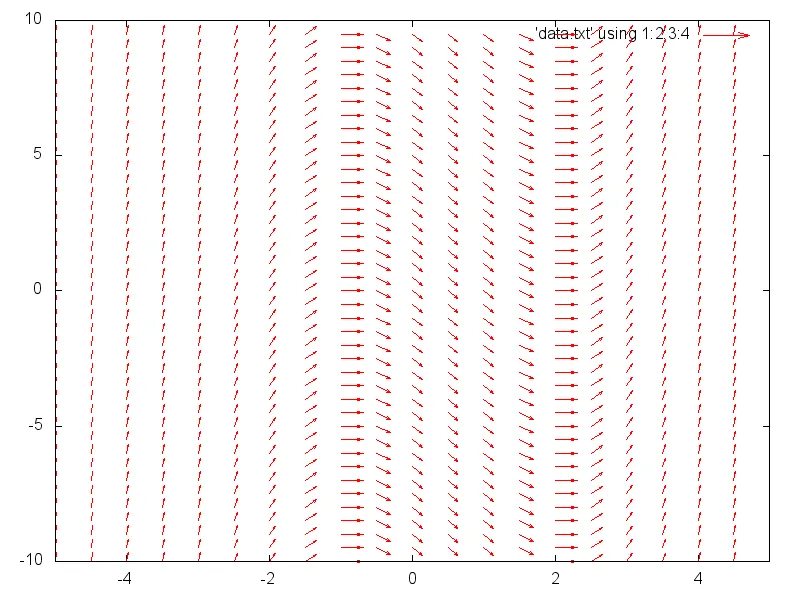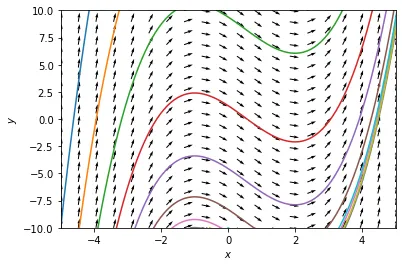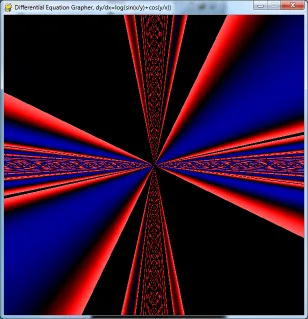有没有一种方法可以用Python绘制方向场?
我的尝试是修改http://www.compdigitec.com/labs/files/slopefields.py。
#!/usr/bin/python
import math
from subprocess import CalledProcessError, call, check_call
def dy_dx(x, y):
try:
# declare your dy/dx here:
return x**2-x-2
except ZeroDivisionError:
return 1000.0
# Adjust window parameters
XMIN = -5.0
XMAX = 5.0
YMIN = -10.0
YMAX = 10.0
XSCL = 0.5
YSCL = 0.5
DISTANCE = 0.1
def main():
fileobj = open("data.txt", "w")
for x1 in xrange(int(XMIN / XSCL), int(XMAX / XSCL)):
for y1 in xrange(int(YMIN / YSCL), int(YMAX / YSCL)):
x= float(x1 * XSCL)
y= float(y1 * YSCL)
slope = dy_dx(x,y)
dx = math.sqrt( DISTANCE/( 1+math.pow(slope,2) ) )
dy = slope*dx
fileobj.write(str(x) + " " + str(y) + " " + str(dx) + " " + str(dy) + "\n")
fileobj.close()
try:
check_call(["gnuplot","-e","set terminal png size 800,600 enhanced font \"Arial,12\"; set xrange [" + str(XMIN) + ":" + str(XMAX) + "]; set yrange [" + str(YMIN) + ":" + str(YMAX) + "]; set output 'output.png'; plot 'data.txt' using 1:2:3:4 with vectors"])
except (CalledProcessError, OSError):
print "Error: gnuplot not found on system!"
exit(1)
print "Saved image to output.png"
call(["xdg-open","output.png"])
return 0
if __name__ == '__main__':
main()
 如何获得更像第一张图片的输出?另外,如何添加三条实线?
如何获得更像第一张图片的输出?另外,如何添加三条实线?


